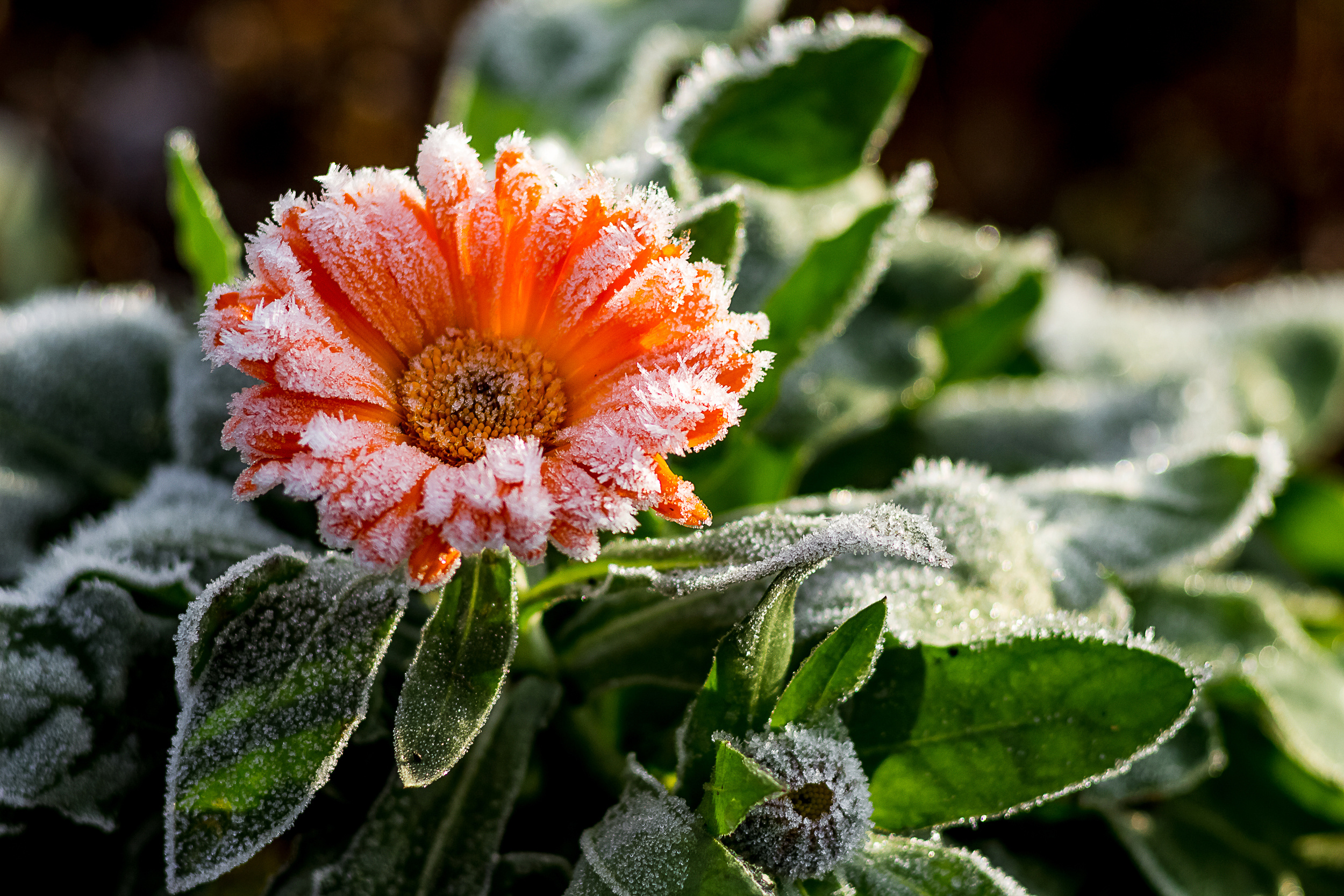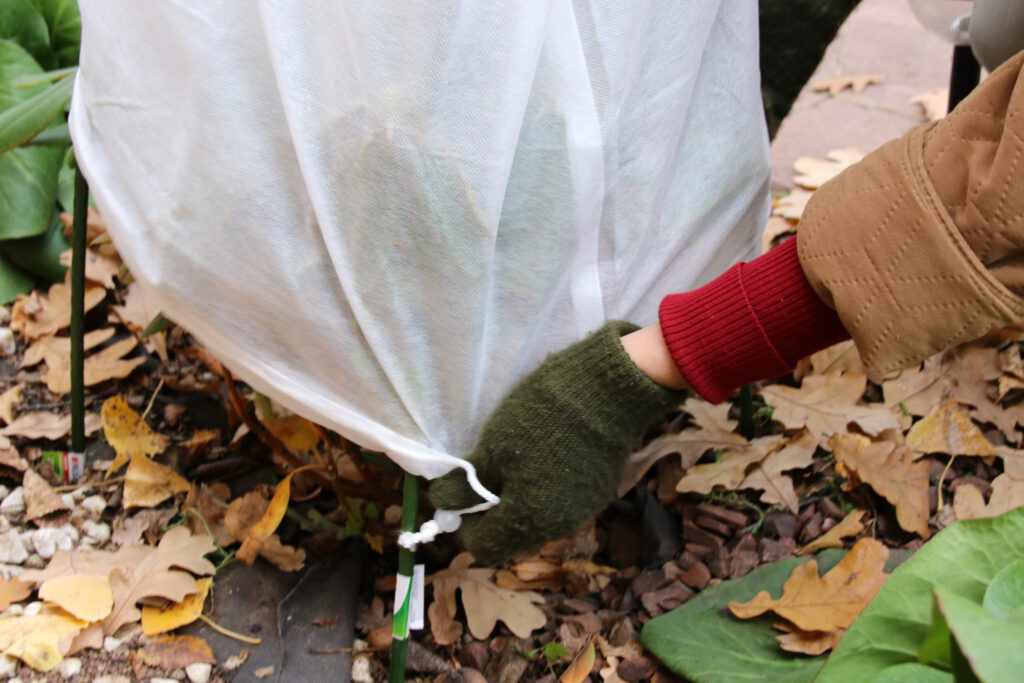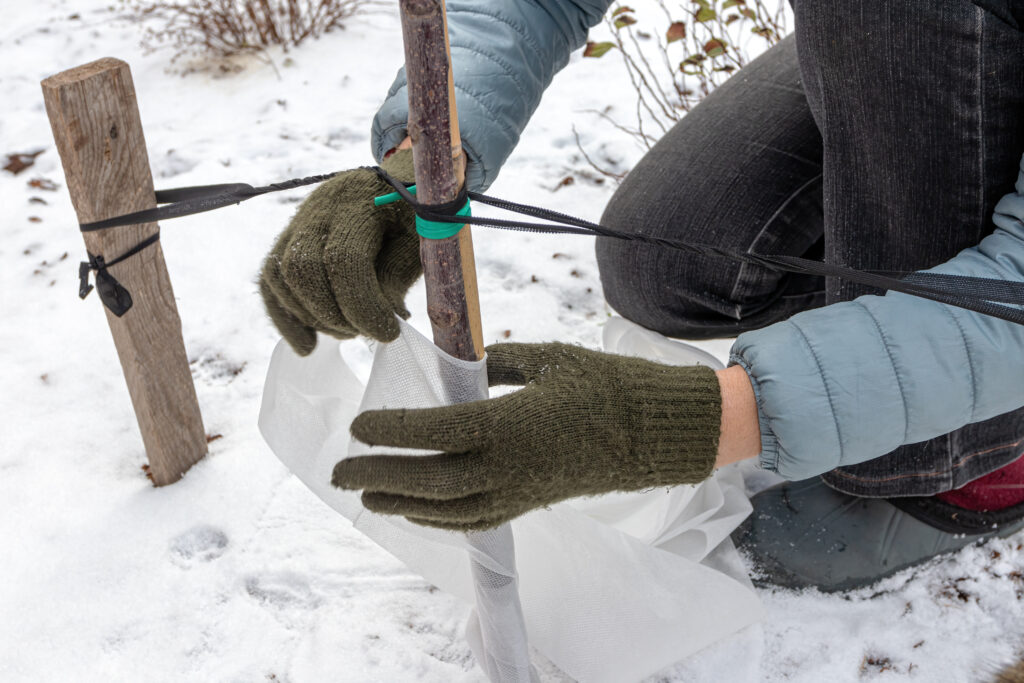Before the Frost: Plant Protection Tips

The days are shorter, the nights are cooler, and you can almost feel frost creeping closer. In the Treasure Valley, our first fall frost usually arrives in October, sometimes earlier in the foothills. A light frost might nip tender plants, but a hard freeze can end the growing season overnight. With a little prep, you can protect both your landscape and vegetable garden, extending color, harvest, and plant health through the season.
Know Your Frosts
Light frost: 29–32°F — brief overnight cold that may damage tender leaves or flowers but usually doesn’t harm roots.
Hard freeze: 28°F and below — lasts longer, often through the night, and can damage tender plants and young roots.
Frost pockets: Low areas can get frost sooner than surrounding spots, so watch microclimates in your yard.
Short-Term Frost Protection (Fall Snaps)
Tender Perennials & Annuals
Some perennials are tender in our area, meaning they won’t survive Boise winters without extra protection. Examples include bedding salvias, fuchsias, tender dahlias, and cannas. Cover them on cold nights or during light frosts with sheets, frost cloth, or light blankets. Remove covers in the morning so sunlight can reach leaves and prevent moisture buildup.
Tender annuals like petunias, marigolds, and impatiens also fall into this category.
Hardy perennials, such as native perennials, lavender, or ornamental grasses, typically survive Boise winters with just a layer of mulch; newly planted specimens may benefit from extra care.

Vegetables
Frost-sensitive crops like tomatoes, peppers, basil, and summer squash benefit from temporary covers and can help extend the growing season.
Root crops such as carrots, beets, and parsnips can remain in the ground under mulch for later harvest.
Longer-Term Winter Protection
Newly Planted Perennials & Shrubs
Apply 2–4 inches of mulch around root zones after the soil cools, keeping mulch a few inches away from stems or trunks. This insulates roots, prevents frost heaving, and helps plants get a head start next spring.
Young Trees & Thin-Barked Species
Wrap trunks with a tree wrap product made for young or thin-barked trees to prevent sunscald and cracking. Apply at the end of November and remove in early spring (around mid-April); never leave wraps on year-round. Use a light-colored crepe-paper wrap—plastic, burlap, or dark materials can trap moisture or overheat the trunk. Crepe-paper wraps shed water, allow some stretch, and keep the trunk dry.
Broadleaf evergreens or young shrubs in windy areas benefit from season-long protection with burlap or, preferably, frost blanket–type materials. These covers are lighter, allow airflow, and reduce moisture buildup.

Established Trees, Shrubs & Hardy Perennials
Most are adapted to our climate and do not require extra winter coverage. Focus your energy on tender, newly planted, or container plants.
Other Helpful Tips
- Water well before frost or freeze events. Moist soil retains heat better than dry soil, protecting roots.
- Check forecasts nightly in October. Even a single frost can impact tender plants.
- Plan your winter protection by plant type. Short-term covers for tender annuals and perennials, mulch for hardy perennials, and wraps for vulnerable young trees or shrubs.
With a few simple steps, temporary covers for tender plants, mulch for perennials, and protective wraps for young trees, you can protect your garden investment and enjoy a beautiful landscape and productive vegetable garden well into fall.
CATEGORY
10/03/2025
a word from our viewers